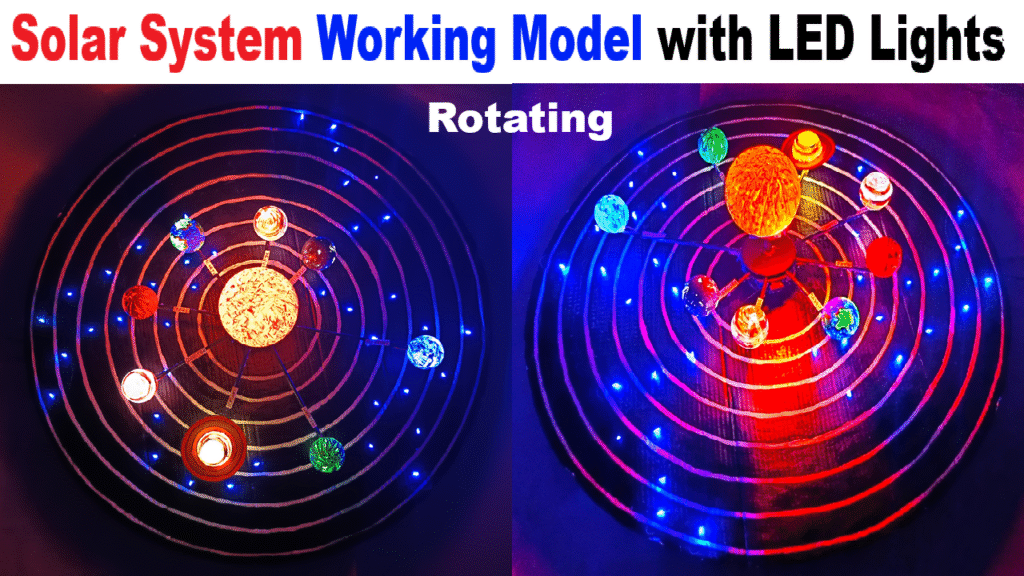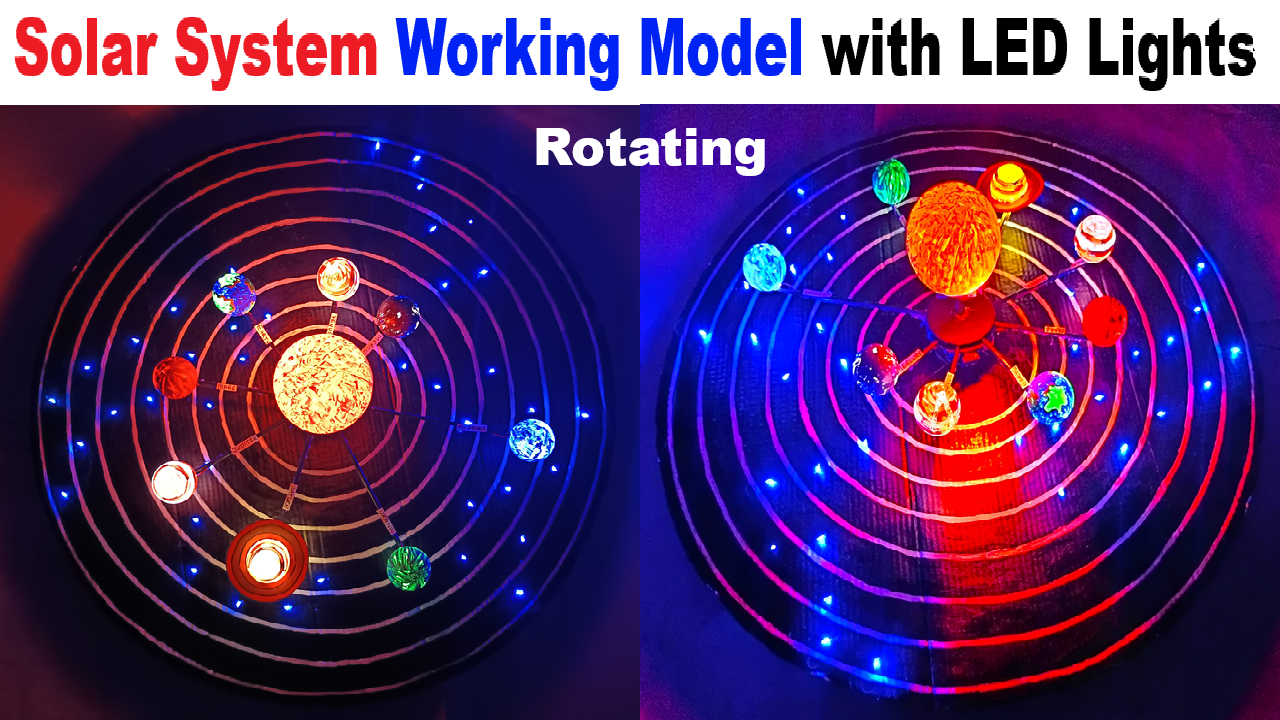Aim / Objective:
To demonstrate the structure of the solar system, the relative positions and rotation of planets around the Sun, and to show how stars and planets can be represented using LED lights in a visual model.

Materials Required:
- Plastic balls of different sizes (representing Sun and planets)
- Small LED lights (to insert into each planet and Sun)
- Slow DC motor (to rotate planets around the Sun)
- Wooden sticks, skewers, or wires (to mount planets)
- Cardboard or wooden base
- Rice lights or small LEDs (to represent stars)
- Wires, battery, and switch
- Glue, tape, or adhesive
- Marker or paint (to label planets and Sun)
Working Principle:
- The model represents the Sun at the center and planets orbiting around it.
- The LED lights inside the Sun and planets represent the glow and illumination.
- Rice lights on the base simulate distant stars.
- The slow motor rotates the planets around the Sun to demonstrate orbital motion, showing the relative positions and movement of celestial bodies in the solar system.
Procedure:
- Fix the Sun ball with LED light at the center of the base.
- Mount the planets on rods or skewers connected to the slow motor so that they can rotate around the Sun.
- Insert LED lights into each planet ball to make them glow.
- Decorate the base with rice lights to simulate stars in the background.
- Connect all LEDs and the motor to a battery using wires and a switch.
- Turn ON the motor and LEDs to observe the rotation of planets and glowing effect of Sun, planets, and stars.
Observation:
- Planets rotate smoothly around the Sun, showing orbital motion.
- LED lights inside the Sun and planets glow, highlighting their positions.
- Rice lights on the base create a starry background, making the solar system visually attractive.
- The model demonstrates relative distances and positions of planets in orbit.
Conclusion:
The solar system working model effectively shows the structure, rotation, and illumination of planets and the Sun.
It provides a visual and interactive way for students to understand planetary motion, orbits, and celestial arrangements, while using LED lights for better visual impact.
This model is suitable for science exhibitions and educational demonstrations.

